The Holy City of Varanasi
Tourists and pilgrims flock to Varanasi, a sacred Hindu city on the banks of the Ganges River
/https://tf-cmsv2-smithsonianmag-media.s3.amazonaws.com/filer/morning-on-the-Ganges-River-Varanasi-631.jpg)
At six in the morning, the alleys of old Varanasi gleam with last night's rain. One path just wide enough for two men to walk abreast leads past shops down to the holy river Ganges.
It's barely sunrise, but the alleys are already in chaos. Men jostle women, women jostle fat bullocks, bullocks narrowly avoid stepping on children. Everything is for sale – small bottles of holy Ganges water, larger bottles of branded mineral water, tiny figurines of the Lord Shiva, whose town this is. Tourists, almost invariably wearing colorful harem pants, brush shoulders with locals.
The storeowners watch the activity with lax interest, slurping tooth-rottingly sweet chai out of thimble-sized cups. When asked for directions they come to life, putting away the tea and describing the path with energetic and firm gestures. This may be the city where Hindus come to find enlightenment, but it is easy to lose your way.
Lines of Indian pilgrims walk barefoot through the alleys, drawn by occasional glimpses of the holy river. At last, the alleys fall away, and the sluggish green river appears, smooth as a sheet of glass. From here the view extends to the distant eastern bank, hazed with brown dust. This year, the monsoon rains have been below average, and the Ganges lies low and tame between the banks.
Tens of narrow steps shine wetly. The pilgrims sigh, picking their way down the steps to the water's edge. It's sunrise, the most fortunate hour, and they're here to take a dip in the Ganges.
***
In recent years the Ganges River has drawn attention for its ungodly level of pollution. But the bathers are immune to all this. Nearly 2.5 million of them come each year to Varanasi, this holiest of cities, on the banks of the most sacred of Indian rivers. According to Hindu legend, Lord Shiva unleashed the Ganges from the knot of his hair. For centuries, its rich floods lent fertility to the soil of the central Gangetic plains, which nourished some of India's most prominent ancient civilizations.
Varanasi is a heap of mismatched temples and narrow steps located on the Ganges' crescent-shaped western bank, in the state of Uttar Pradesh. It is a city of scholars, home to one of Asia's largest universities. It is a city of temples, including the gold-plated Vishwanath sacred to Shiva; the Bharat Mata, or Mother India, temple that boasts a huge three-dimensional relief map of the Indian subcontinent carved out of marble; and the hundreds of small temples that dot the waterways and alleys.
It is also a city of legends. Varanasi strains under its own myths, which are contradictory, obscure and impossible to prove.
"The history of Varanasi is a puzzle [that] has to be solved by a group of scholars together," says Bhanu Shankar Mehta, who has lived in Varanasi for more than 80 years and lectures on its history. "You must put all the mythological and historical and proto-history together."
Old Varanasi's ancient ruins lie on the Rajghat plateau, in the northeastern part of the city. Here, archaeologists discovered pottery that went back to 1000 B.C., and broken masonry from as late as A.D. 1500, suggesting the area has been continuously inhabited for 2,500 years.
"We have very few settlements that continue like that, so Varanasi is very important from an archaeological perspective," says P.N. Singh, a history professor at Banaras Hindu University. "It is one of the world's oldest continuously inhabited cities."
Varanasi's legends go back some 10,000 years, to the oldest epics of Hindu literature, including the Puranas, the Vedas and the Mahabharata. They say Varanasi is the city of Lord Shiva, who walked here with his wife Parvati at the beginning of time. It could also be the battlefield where the god Krishna set fire to a duplicate but imposter Krishna, or the place where the Lord Rama came to do penance after slaying the demon Ravana.
"Banares is an encyclopedia itself, it has got 100 dimensions, you can't cover it even in a book," Mehta says.
In a country where most cities have at least two names, Varanasi has over a hundred. The locals still call it Banaras, perhaps after the mythological king Benar. The Jataka Tales, a collection of ancient Buddhist folk stories, refer to the city as Jitwari, the place were business is good, or as Pushwavati, the flower garden city, or as Molini, the lotus garden city.
Under the name Kasi, the city was one of 16 great Indian kingdoms mentioned by ancient Buddhist texts from the first millennium B.C., when the invention of highways and coins first led to a flourishing of commerce. Iron arrowheads and fortified cities discovered by archaeologists suggest violent encounters between the kingdoms, but it was also an age of nonviolence. Gautama, later known as the Buddha, delivered his first sermon during this era. And Mahavir, the founder of the ascetic and nonviolent Jain religion, was born during this period.
***
Prakash can't be older than 15 years old, but he's been working as a boatman on the Ganges for as long as he can remember. Every morning, starting as early as five AM, he rows tourists down the Ganges in a 10-foot-long blue wooden boat. The most popular time for a boat ride is sunrise, when the surface of the sacred river flames with reflected color and bathers line the waterfront.
Along the way, he tells the stories of Varanasi's famous ghats, the sets of steps that lead from the alleys of Varanasi down to the river. Each ghat was constructed by a different medieval king, and though they are young compared to the ancient ruins on Rajghat, the ghats have inspired their own mythology.
The most famous is the Desaswamedh Ghat, where the father of Lord Rama once sacrificed 10 horses in an appeal to the sun.
At Kedar Ghat a priest used to perform a daily prayer to Lord Shiva. One day he became ill and couldn't perform the prayer, telling Lord Shiva, "You will have to come yourself."
"So Lord Shiva rose from the water in front of the ghat," Prakash says.
Further down the river, a ghat is abandoned. "That's Narad ghat," says Prakash. "The story is that women who bathe there will fight with their husbands, so no one bathes there."
Heavy black smoke rises from Harish Chandra and Manikarnika ghats. Ashes and flowers dot the waves. These are the burning ghats, where relatives bring their loved ones to be cremated. According to Hindu legend, those who are cremated in Varanasi will achieve enlightenment and be free of the cycle of death and rebirth. Nearly 300 bodies are cremated every day.
"This is the best city to die in," Prakash says, smiling, as he looks at the sun rising over the ghats. The bathers are out in full force. Some lather up, while others dance and sing in the water. In the narrow alleys behind them, the city of Varanasi is just waking up.
/https://tf-cmsv2-smithsonianmag-media.s3.amazonaws.com/accounts/headshot/anika-gupta-240.jpg)
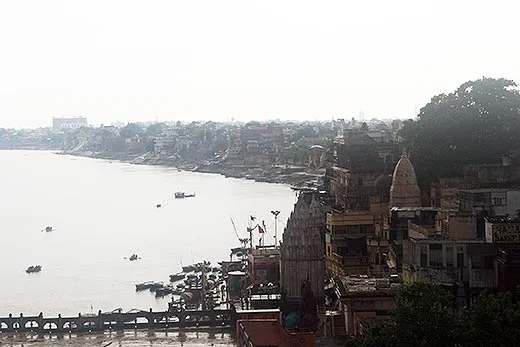
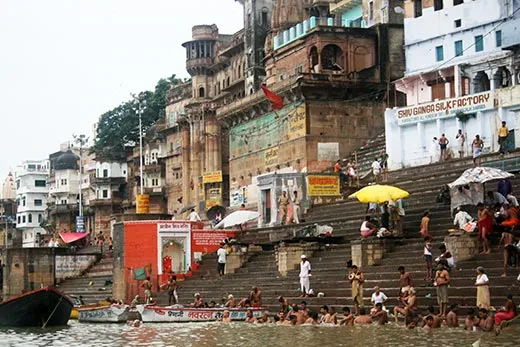
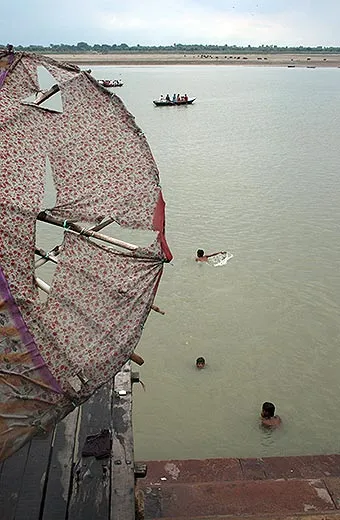
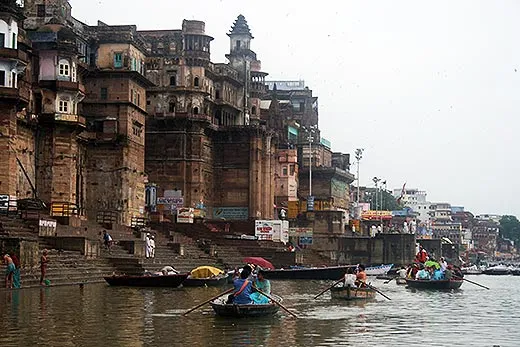
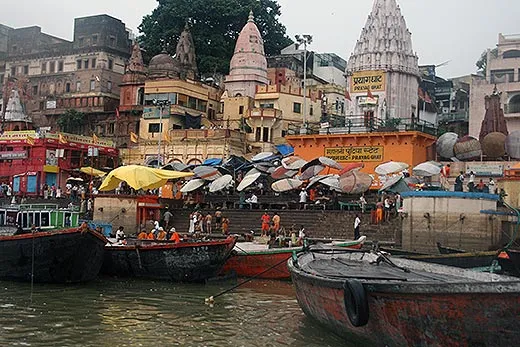

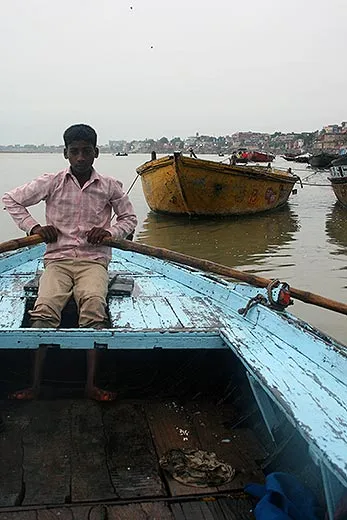
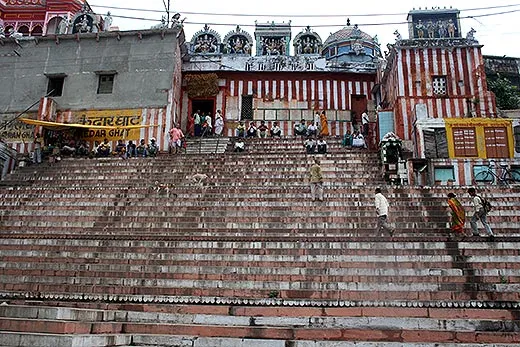
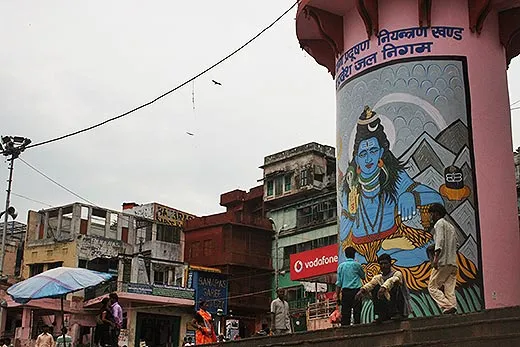
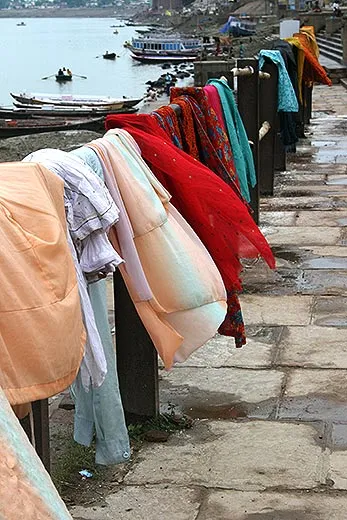
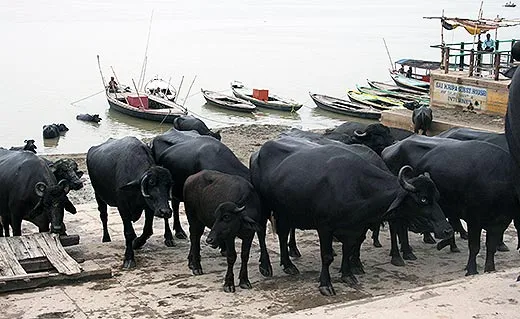
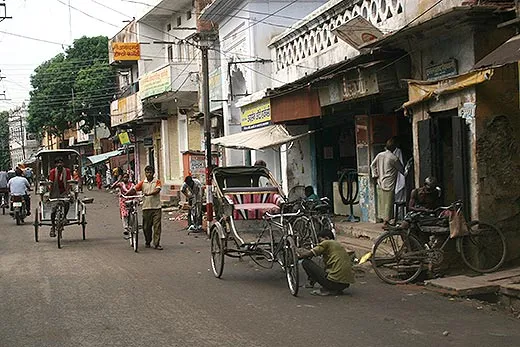

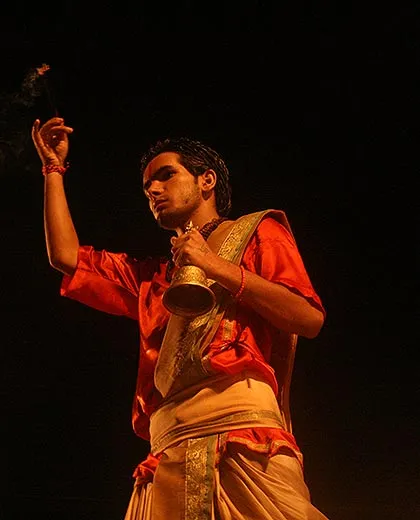
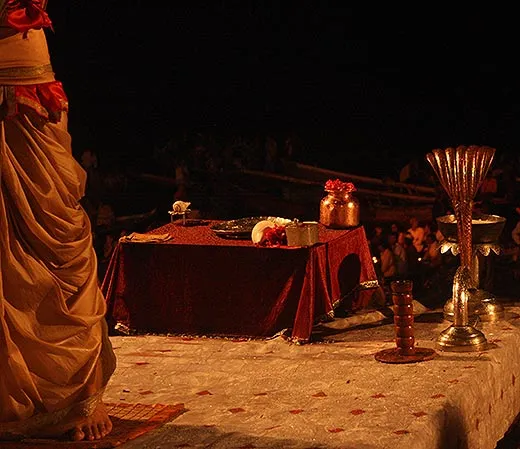
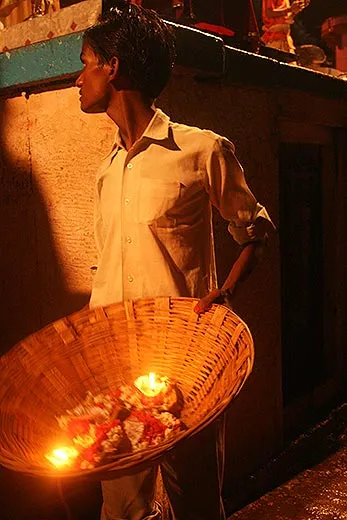
/https://tf-cmsv2-smithsonianmag-media.s3.amazonaws.com/accounts/headshot/anika-gupta-240.jpg)